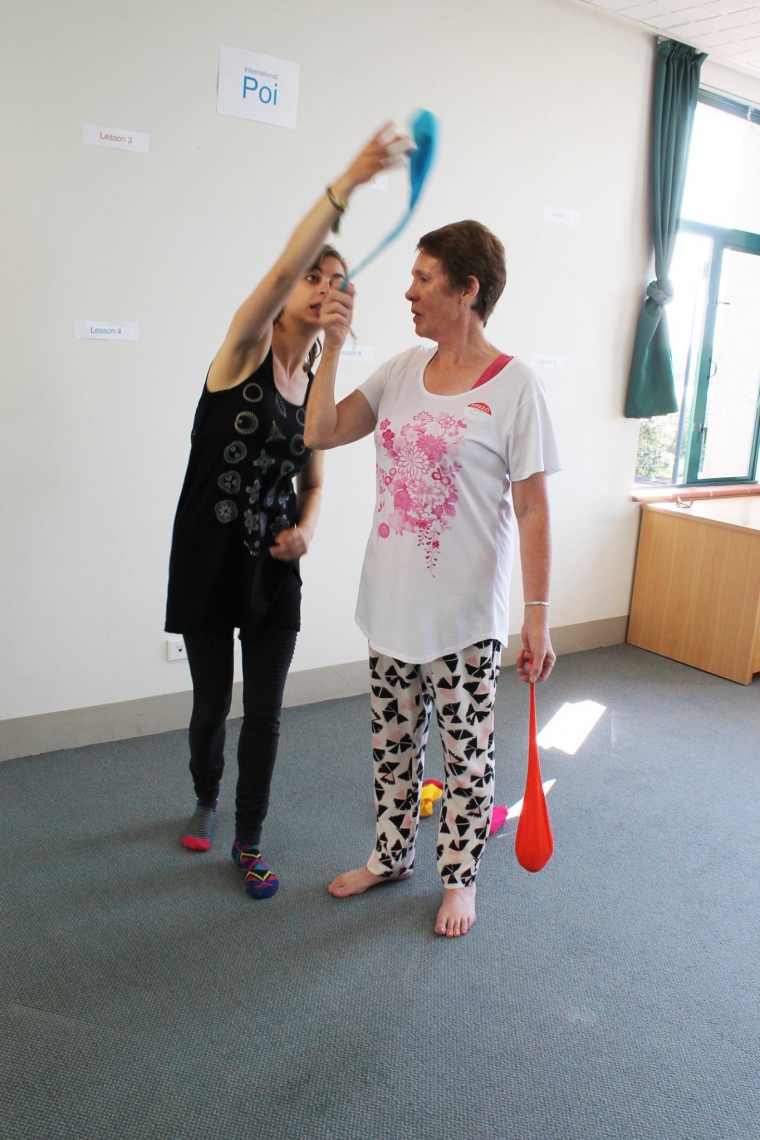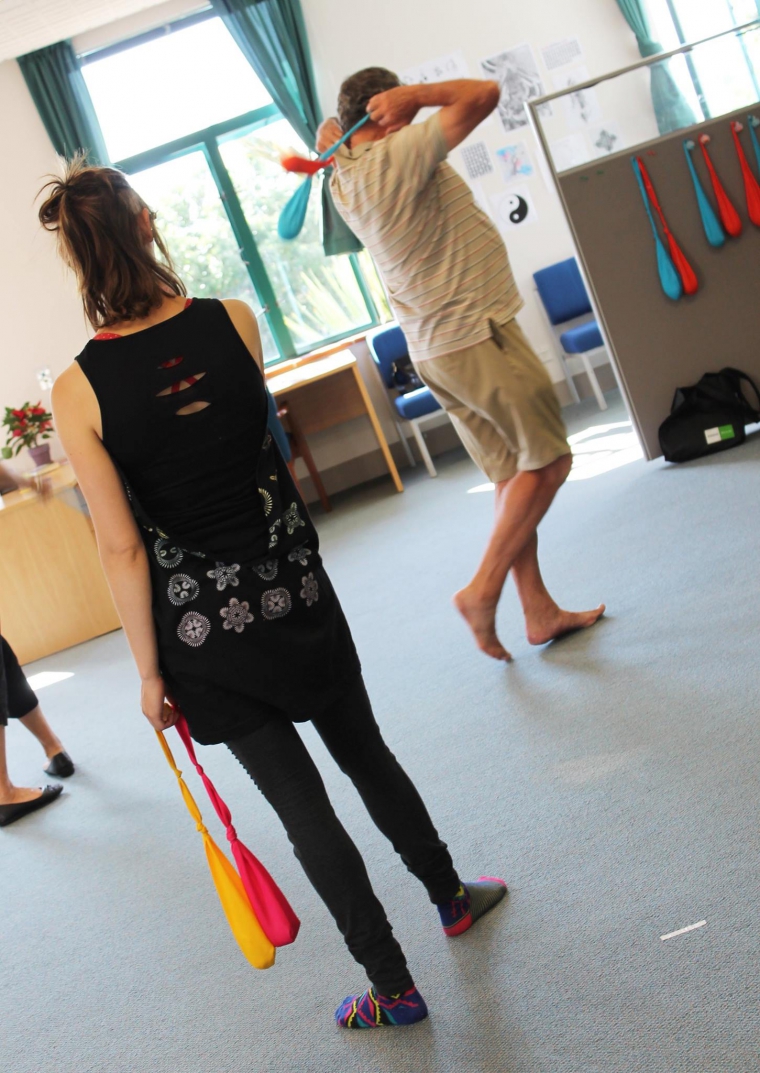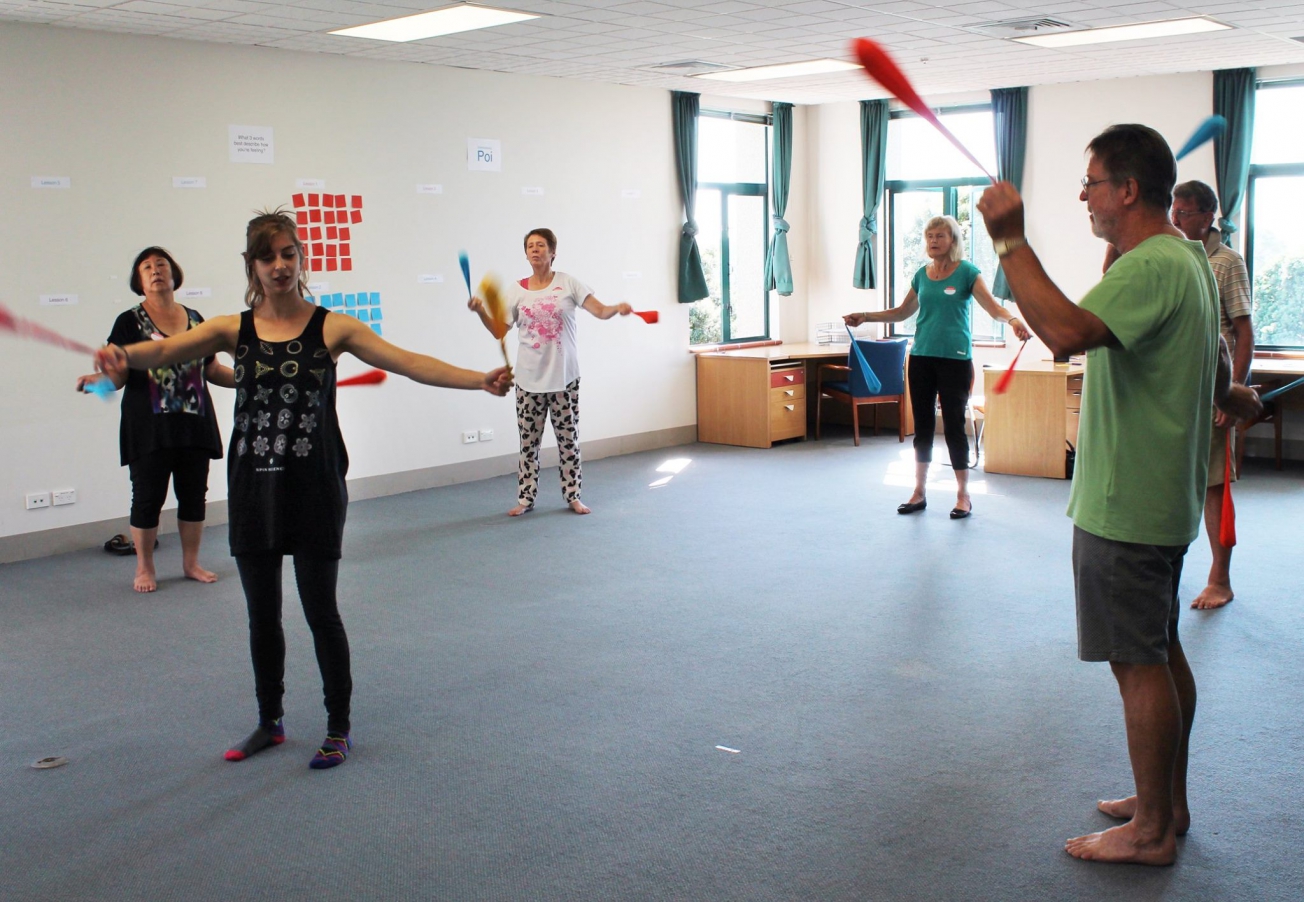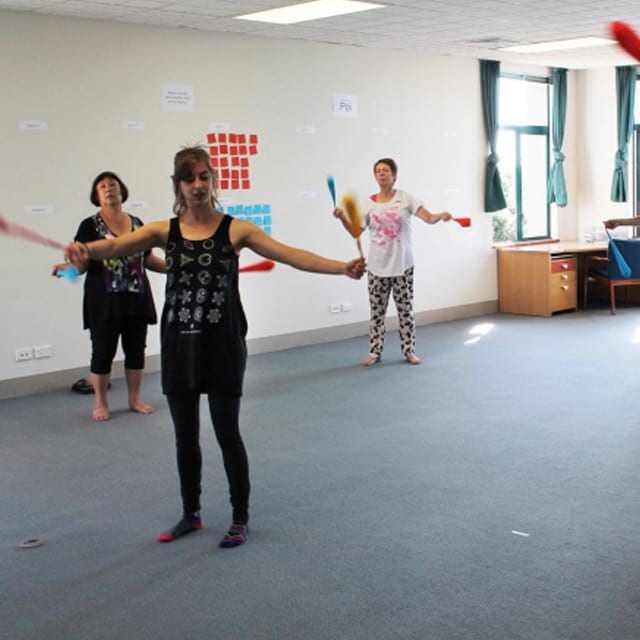The poi lessons.
Some musings and observations from my first month teaching adults over 60 how to spin poi:
The simple act of spinning the poi in a circle is not so simple.
I was amazed, and tongue tied, when a handful of participants could not consistently make the poi go around in circles after one, two, even three lessons. It’s something I have always taken for granted, as people typically pick up poi for the first time and just get it going, without any instruction. But some of my participants were struggling, particularly with their non-dominant hand, which leads me to believe the primary problem is a loss of mobility and flexibility on the non-dominant side (which commonly occurs as we age). I saw many participants use their entire arm to get the poi going, instead of the fine and complex movements of the wrist and fingers. Using your whole arm is tiring and unsustainable; often the poi would lose momentum and just stop. I have never given so much thought to the mechanics of keeping the thing going, of exactly what muscles and movements are needed.

Forwards and backwards are in the eye of the beholder.
While I typically teach specific poi moves, which need to be done in a specific plane with specific timing, I tend to let my students spin in whatever direction they want. You want to learn the figure 8 going forwards first? Great. Backwards first? Also great. But things become interesting when the student does not know which way they are going. I have encountered this before, but it is usually when someone is learning a new trick, and it is usually short lived (as they begin to grasp the trick they sort out which way they want to go, and are able to consistently practice in that direction). But I slowly realized something else was going on with many of my participants…they did not have the same concept of what was forwards and what was backwards as I did. Some participants were viewing what I would call forwards as backwards, and vice versa. Now that’s confusing, but easy enough to sort out. Other participants had a shifting view of what was forwards and what was backwards, as in they would spin in one direction and call it forwards, then cross the poi over their body for example, and be spinning in the same direction but now call it backwards. I discovered it wasn’t the direction the poi was moving that constituted the idea of direction, but rather a host of other things, from the direction their hand was facing to what side of their body the poi was on. These variables seemed to mentally shift which way the poi was traveling, even though the poi itself was not changing. While fascinating, this led to lost of confusion and frustration.
Your lower body will not necessarily know what to do on its own.
Similar to most people picking up a poi for the first time and getting it going in a circle without instruction, most people also tend to work out any required lower body movements. But when your balance isn’t so good, or you have two metal hips, there needs to be some planning. Does one leg need to be in front of the other? If so which one and how can you tell? How will you shift your weight when you turn? Will you take a step, will you pivot? My own footwork is quite subconscious and automatic, so breaking down exactly how to do something like a half turn was new territory.

Choosing what move to do next is some next level shit.
Around lesson 6 of 8 the participants had a solid foundation of poi moves, and I had the genius idea of nudging them into some creative decision making. Let’s move beyond doing this trick, stopping, and then doing that trick, and instead just…flow. And so I gave them this task: let’s break up chasing the sun (which is a two part trick) with some other move. For example, do the first half of chasing the sun. Then, do some figure 8s. Then, do the second half of chasing the sun. And to wrap it up, some figure 8s. Two moves you already know, alternating. No big deal. After many blank stares and a long silence, one brave participant asked “Uh, can you explain what we’re supposed to be doing again?” Of course, no problem. You’re going to do chasing the sun like usual, but instead of going right from part one to part two, add in another poi move in between. It can be anything you want, you can even just spin the poi in a circle. “So…how many times should we spin in a circle in between?” However many you want, it’s just about putting something between the two parts, to start to create a flow between movements. Or at least, that was the idea…minus one or two brave souls, everyone in every group I taught ended up just practicing chasing the sun. I introduced the idea in a subsequent lesson as well and same story…the majority of participants ended up just working on one move, despite some very genuine efforts to make sense of what I was saying. Maybe it was just too early in the game, but putting two moves together, and having freedom to choose what those moves should be, was all too much.

Too much poi is not a good thing.
At the end of day one, after teaching 4, hour long poi lessons, I was a complete wreck. Literally. The next day I had to take a sick day. Maybe it was the emotional release of finally starting the poi lessons after a year of conceptualizing and planning the study, or maybe my poi were just too heavy and I was spinning too hard for four hours in a row, or maybe the poi gods were like “oh you think poi is good for your health? Take that!”, but I can tell you one thing: too much poi is not a good thing.

